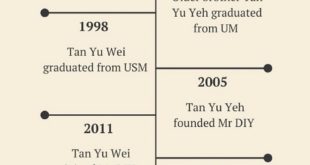Earlier this Wednesday, the Elections Department of Singapore (ELD) announced that the Registers of Electors have been certified and are now available for public inspection online.
According to the ELD, 2.65 million Singaporeans are now eligible to vote in the upcoming election — this is an increase of over 59,000 voters as compared to the previous election in 2015.
With general elections looming, one wonders whether it is safe to hold an election amidst the COVID-19 outbreak and the ongoing “circuit breaker” in Singapore.
Historically, the longest period between the release of the electoral boundaries report and the dissolution of Parliament stands at 1 month and 26 days.
It is now over a month since changes to Singapore’s electoral boundaries were announced on March 13.

While everyone is advised to stay at home during this circuit breaker period, the government might call for a general election once the situation improves.
To have an idea of how the upcoming general election in Singapore might be conducted, we can take a look at the recent South Korea legislative election.
Issuance Of Plastic Disposable Gloves For Voters
During the South Korea legislative election polling, which took place on April 14 and 15, a total of 3,500 polling stations were set up.

As voters would need to fill in the polling forms, hand sanitisers were also provided at the polling stations.

On top of that, the government also issued plastic disposable gloves to voters, which must be worn after sanitising their hands. Voters are also required to maintain a safe distance from others.
Since voters were wearing plastic gloves, the government officials did away with fingerprint checks. They made use of facial recognition machines instead to further minimise the risk of infection.
Separate Voting Areas For Mild Symptom Voters

For voters who have a temperature above 37.5°C, they were taken to a separate voting area in order to maintain a safe distance from other voters.
To further curb the risk of virus outbreaks, polling booths were also set up outside residential areas so voters with mild symptoms can safely cast their votes.
After-Hours Voting Period For Quarantined And COVID-19 Voters
Of course, one of the biggest issues faced was how the country needed to allow quarantined voters to cast their votes.
For this group of voters, they have been given strict instructions to only vote at certain times and at designated polling stations.

They could only leave their homes from 17:20 until 19:00 on the day of polling. On top of that, they could not use public transport and could either walk or use their own car.
They must also be escorted by health officials, or be monitored by a tracking app.
More than 13,000 in self-quarantine who had signed up to vote were allowed to do so only after the polls closed.
For patients who are being treated for coronavirus, they too were allowed to vote by mail or in person, using special booths after polls closed.
High Voter Turnout Despite COVID-19 Threat
Prior to the polling, political campaigning has also been affected by the outbreak.
Instead of the traditional handshakes and distributing of name cards, candidates have been keeping their distance from citizens, bowing and offering an occasional fist bump.
Many have also turned to online media such as YouTube and Instagram to connect with voters, while some have even volunteered to disinfect parts of their constituencies.
Regardless of the imminent COVID-19 threat, it’s clear that the fear did not keep voters from stepping out to cast their votes.
Overall, it was reported that the turnout was about 66%, the highest in 20 years, which translates to over 28 million voters.
With general elections looming in Singapore, will we see similar measures being implemented?
For more GE 2020-related content, check out our coverage here.
Featured Image Credit: AFP via Getty Images



